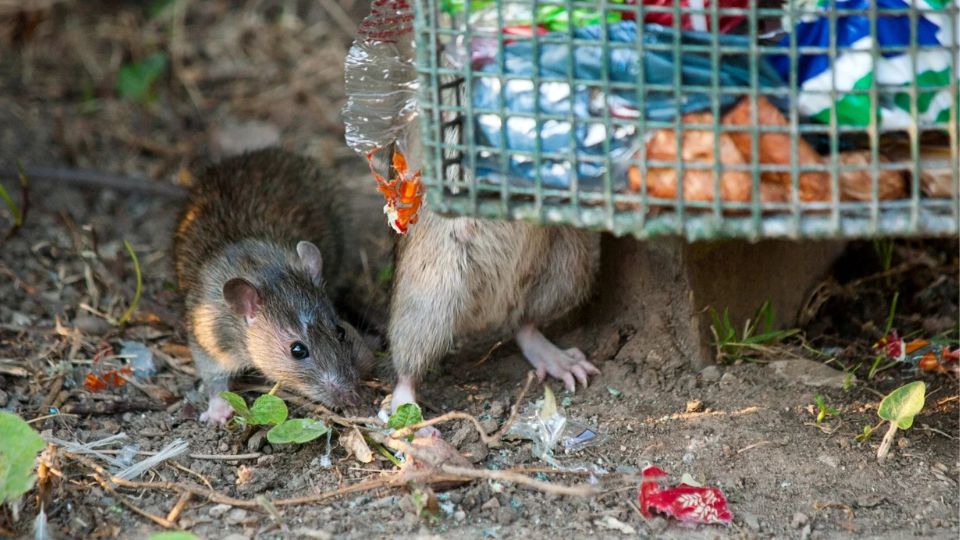Rats, those well-known household pests, have made their way into the heart of Ohio. Some people find them cute and may even have them as pets, while others work hard to prevent them from entering their homes. Three Ohio cities have emerged as significant on the list of the most rat-infested cities in the country, according to a recent study. Let’s take a closer look at why these cities are dealing with rodent problems.
1. Cleveland, Ohio: Known for Its High Rat Population
Cleveland, Ohio, has earned a place in the top 10 of Orkin’s Top 50 Rattiest Cities list. For nine years in a row, the city has been fighting against rat invasions, making it one of the most rat-infested cities in America. People living here often hear noises in their attics, find chewed wires, and sometimes see rats in their yards.
2. Columbus, Ohio: Close Behind
Columbus, Ohio, ranks 18th on the list. Although it hasn’t reached the highest rank, its rat population is significant. The city has made commendable efforts to address rodent issues, but the battle is ongoing. From city alleys to residential areas, Columbus residents are always on the lookout for these bothersome pests.
3. Cincinnati: Known as the Rat Capital of Ohio
Cincinnati, Ohio, is ranked as the city with the highest rat population in the state. Cincinnati, ranked 31st nationally, continues to battle to keep its streets free of rats. From the historic architecture to the lively riverfront, rats manage to infiltrate every corner and crevice. Local pest control services are dedicated to reducing the rat population, but the challenge continues.
What Causes the High Rat Population in Ohio Cities?
Several factors contribute to the high rat population in Ohio cities:
Seasonal Changes: When temperatures decrease in the fall and winter, rats look for warmth by invading homes and buildings, causing a rise in rat infestation issues in certain cities.
Massive construction projects in urban areas can disrupt rat populations, leading them to scatter and search for new sources of food and shelter, which can result in heightened rat activity.
Urban areas with a lot of people walking around, restaurants, and poor waste management can draw rats because they can easily find food like trash and leftover food containers.
In cold weather, rats look for shelter indoors where they can find food and water, causing them to infest homes and offices more often. Insufficient pest control practices and favorable environments for rats can lead to a significant rat population in urban areas.
To tackle the problem of high rat populations in Ohio cities, residents need to follow specific steps like storing food correctly, decluttering homes, keeping up with landscaping, checking for rodent entry points, and notifying pest control authorities about sightings for prompt action. Moreover, raising public awareness through campaigns about appropriate waste disposal and pest control can assist in reducing the rat infestation issue in these cities.
Also Read: Solution for New York City Rats Issue, Everything You need to Know
How do rats typically get into houses in Ohio cities?
One of the most frequent ways rats get into homes in Ohio cities are:
Rats have the ability to fit through small openings as narrow as 1/2 inch wide by gnawing holes, enabling them to enter homes through gaps in walls, floors, and roofs.
Rats can swim through sewer lines and get into homes through floor drains or climb sewer pipes up to the second floor. Rats usually find their way into homes through openings that connect to crawl spaces, attics, and other areas allowing them to access the interior of the house.
Roof and Eaves: Rats commonly find their way into houses through gaps in rooflines, eaves, and crawl spaces. It is important to seal these areas using rodent-resistant materials such as steel wool or steel mesh. Rats may enter homes through exterior walls, particularly if there are openings or cracks that allow them to access the interior of the building.
To keep rats out of your home, it’s important to check for entry points, seal gaps, keep your property clean, store food properly, and dispose of waste correctly to avoid rat problems. Residents can greatly decrease the chances of rat infestations and maintain a pest-free living space by securing homes and removing attractants.
In conclusion
Ohioans need to stay alert in their battle against these unwelcome visitors. To prevent rats from entering your home, make sure to check for any openings, keep your yard tidy, and store food properly. Although rats are a common sight in cities, these urban areas are committed to taking back their spaces from the furry intruders.
Next time you hear a rustling in the attic or spot a rat darting across the sidewalk, keep in mind that Cleveland, Columbus, and Cincinnati are also dealing with rat problems in Ohio.



Leave a Reply